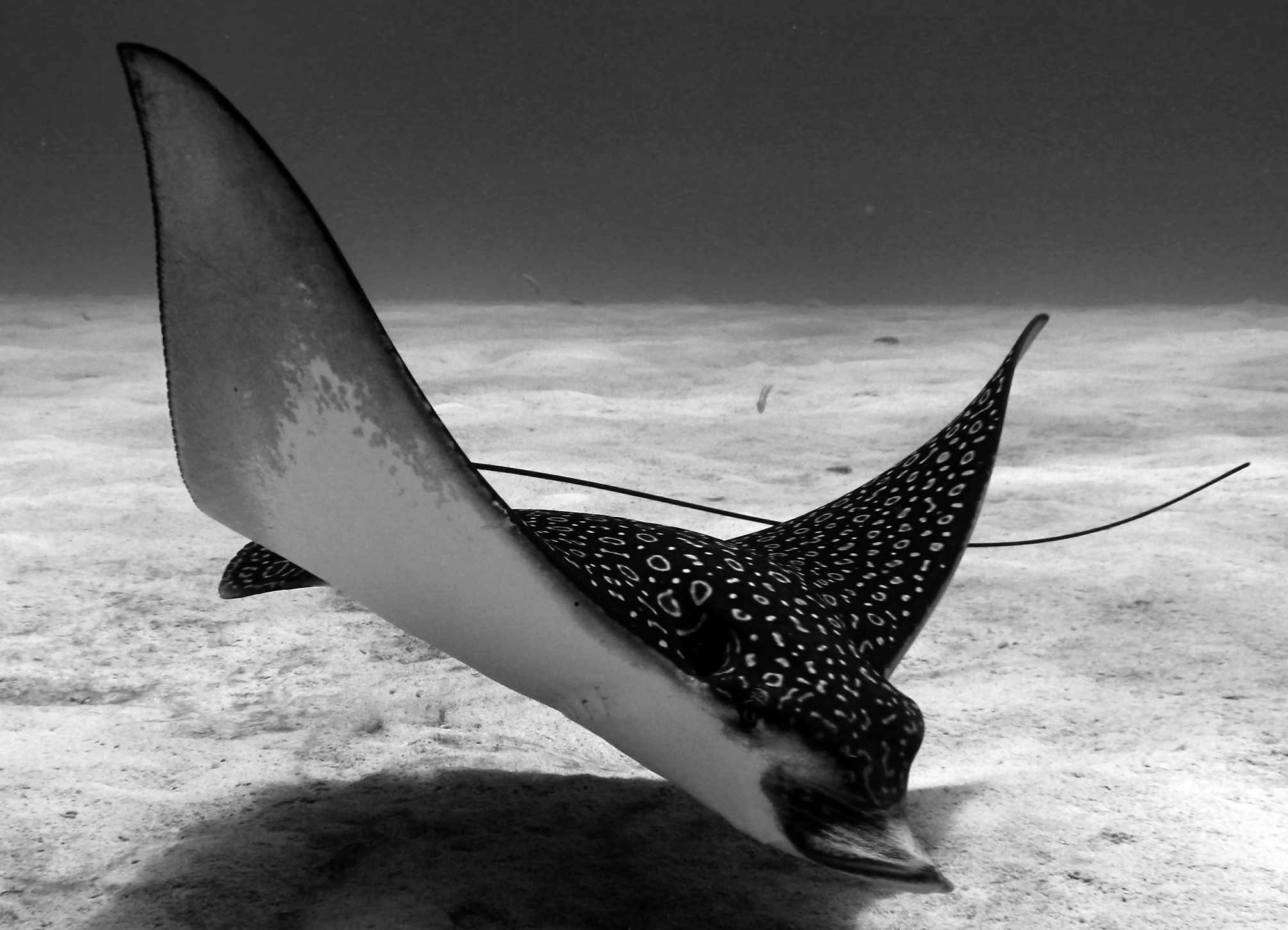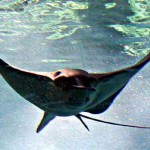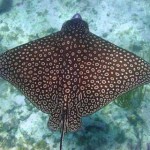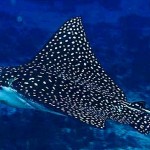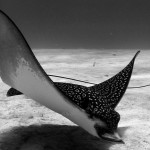Spotted Eagle Ray Facts
Scientific Classification of Spotted Eagle Ray: Aetobatus Narinari
Kingdom of Spotted Eagle Ray: Animalia
Phylum of Spotted Eagle Ray: Chordata
Class of Spotted Eagle Ray: Chondrichthyes
Order of Spotted Eagle Ray: Myliobatiformes
Family of Spotted Eagle Ray: Myliobatidae
Genus of Spotted Eagle Ray: Aetobatus
Species of Spotted Eagle Ray: A. Narinari
Eagle Ray or Spotted Eagle Ray
The spotted eagle ray is the most outstanding type of the cartilaginous fish in the world. When compared to other members of the same family, these species are contrastingly tranquil creatures. Other popular names that they have include bonnet ray, eagle ray, duckbill, bonnet skate and duck billed ray.
Pictures of Spotted Eagle Ray
Some Interesting Facts about Spotted Eagle Ray
- As compared to their circular body, their tail is three times longer.
- These species do not have the caudal fin.
- They are also identified as a game fish.
- The females get along with numerous males during the breeding season.
Distribution of Spotted Eagle Ray
These fishes are found in tropical water areas including parts of Atlantic, Indian Ocean, Gulf of México, Hawaii, Africa, and Oceana. They are also abundant in Northern Japan, Galapagos Island and Australia.
Characteristics of Spotted Eagle Ray
- Length of Spotted Eagle Ray: The elder ones usually grow up to a length of 16 feet. The size of the younger ones varies from 17-35 cm.
- Wingspan of Spotted Eagle Ray: The wingspan of the average sized eagle rays is 9 feet but for the larger ones, it may go up to 10 feet.
- Weight of Spotted Eagle Ray: The weight of these species varies from 180-225 kg while the larger one may weigh 230 kg.
- Color of Spotted Eagle Ray: The dorsal portion of these species range from dark blue to black or grey. The sides are white with some yellow and pearl colored spots and rings. The lower portion of the stomach is off white while the tails appear white.
- Body of Spotted Eagle Ray: The body is shaped like a flat disc. There is also a pelvic fin at the tail.
- Snout of Spotted Eagle Ray: These species have flat snout that resembles the beak of a duck.
- Tail of Spotted Eagle Ray: The tail of these species is long and is attached to 2-6 poisonous stringers at the base.
- Mouth of Spotted Eagle Ray: These fishes have flat teeth that are somewhat like a plate in both upper and the lower jaw. They have 6 papillae located on the floor while about 6-7 on the roof.
Behavior of Spotted Eagle Ray
- Eagle Ray floats in small clans of 3-15 fishes and travel long distances towards a direction and at the same pace. They like to swim quietly and in open water areas. Apparently they get more energetic during high tide.
- These species dig the sand with their flat shaped snout and get encircles within the sand they fling through their gills.
- A frequent phenomenon observed is the simultaneous movement of their pectoral fins and abdomen that reflect two kinds of motions called extreme pelvic and pelvic thrusts.
- They usually jump in to the water and return very soon. When threatened, they simply jump out of water.
- When captured and pulled out, they let out a loud sound. However they are shy of human beings.
Food Habits of Spotted Eagle Ray
These species like to have bivalves, crabs, mollusks, shrimps, whells, and other smaller fishes.
Habitat of Spotted Eagle Ray
These fishes like to stay in the coastal areas of reefs and bays. Sometimes they might dwell in the profound waters depths of about 80 m while at other times they may be found on the coastal surface. The ideal water temperature ranges from 75 degree Fahrenheit to 81 degree Fahrenheit.
Predators of Spotted Eagle Ray
The main predators of these species are the following:
- Tiger Shark
- Bull Shark
- Great Hammerhead Shark
- Silver Tip Shark
These sharks sometimes follow the female eagle rays to prey upon the juveniles.
Adaptations of Spotted Eagle Ray
- The strong tooth and calcified struts of the fish helps them in breaking mollusks for feeding.
- They use their poisonous spines to defend from their enemies. They can also threaten many small and large animals.
- They can float easily at ocean surfaces because of a flat body.
- At sea beds, they bury themselves by half their size in sand, their spiracles and eyes help them to breathe and see in such conditions.
Reproduction of Spotted Eagle Ray
The male counterparts chase the females during reproductive periods. Once the male gets a particular female, they inject their claspers in them. The entire mating process takes about 30-90 seconds. The female counterparts usually mate more than 1 male. The eggs hatch and develop in the womb of the females after a pregnancy period of about 1 year. In each reproductive period, the females give birth to about 2-4 offspring. The young ones attain maturity at the age of 4-6 years.
Life Span of Spotted Eagle Ray
These species can live for about 15-20 years.
Conservation Status of Spotted Eagle Ray
According to the IUCN reports, the fish are in the list of near endangered. They are sometimes tamed for display purposes in public aquariums but countries provide several restrictions for their conservation.
